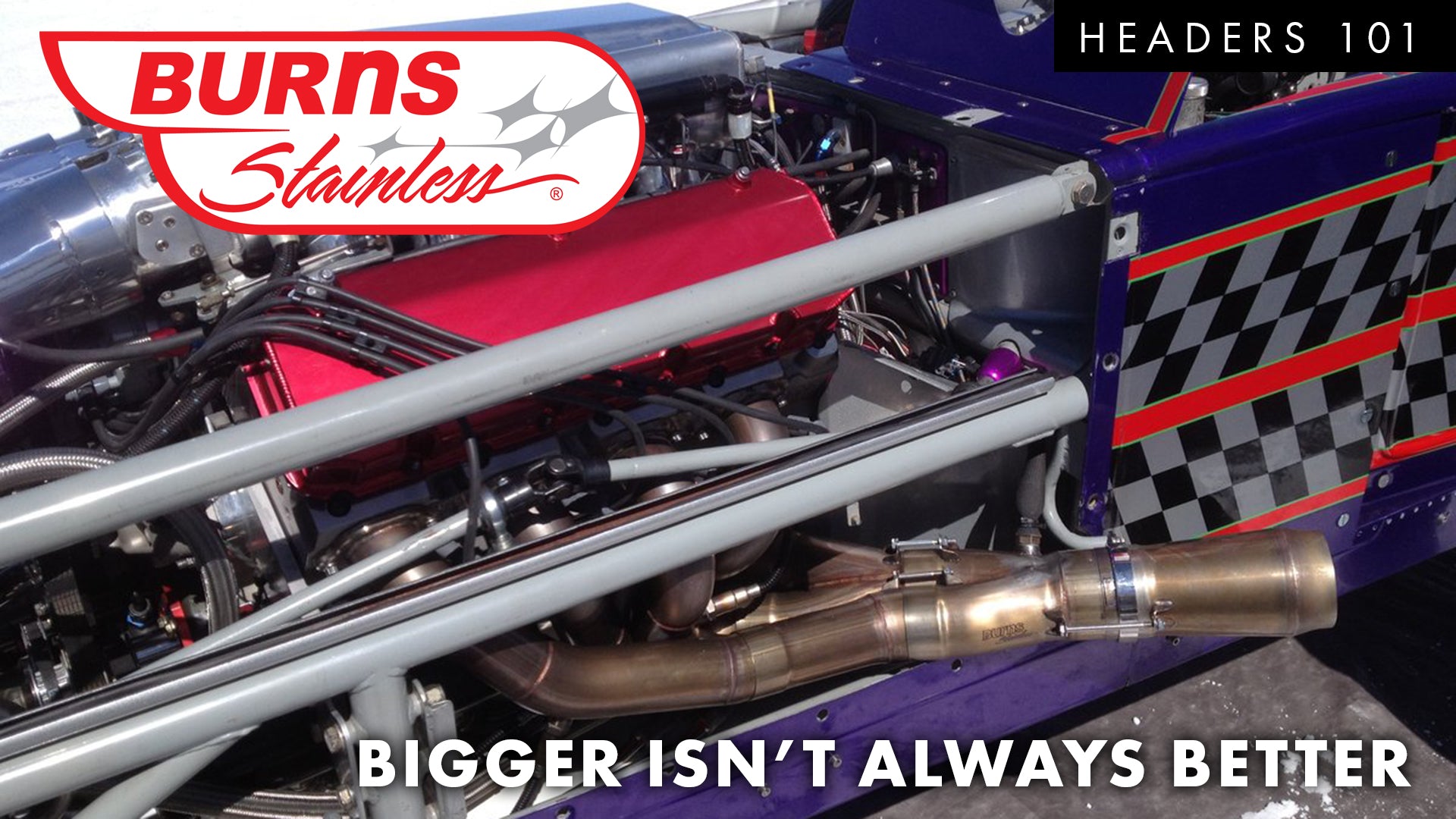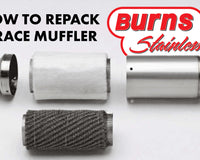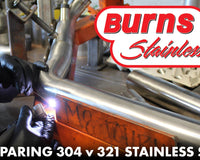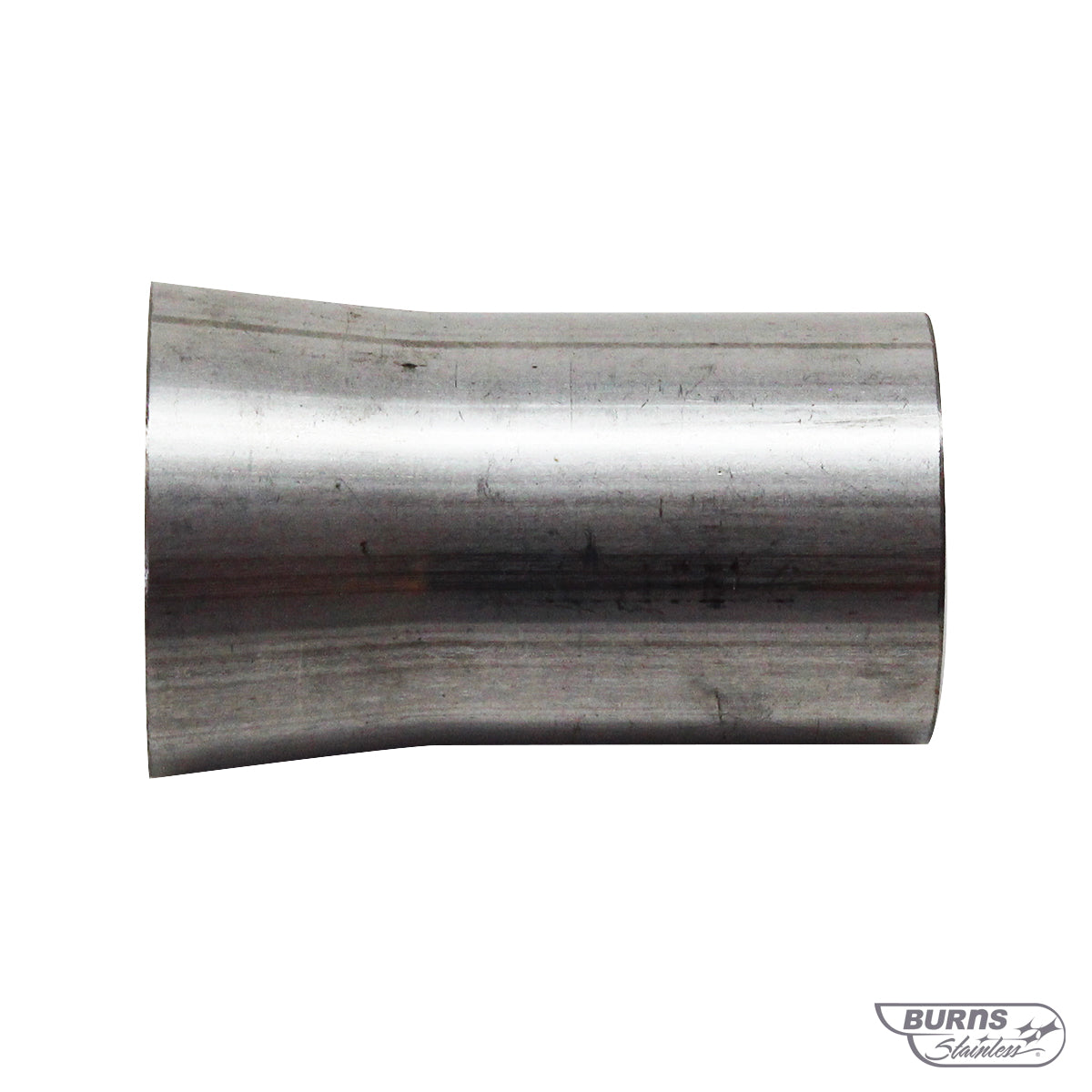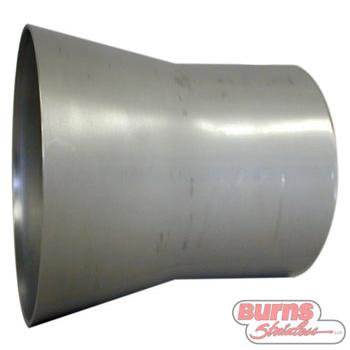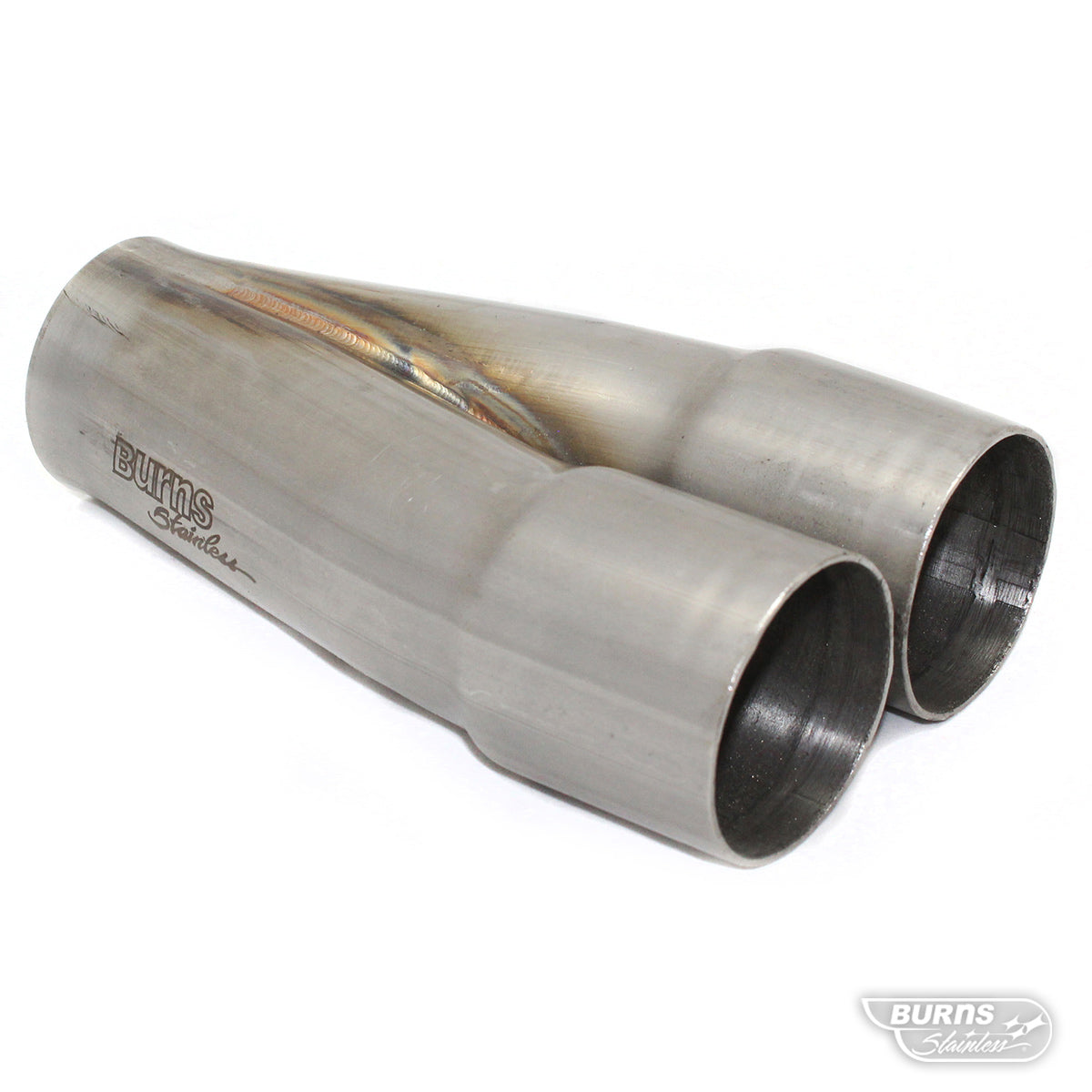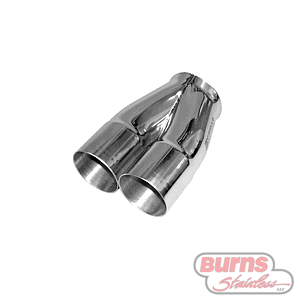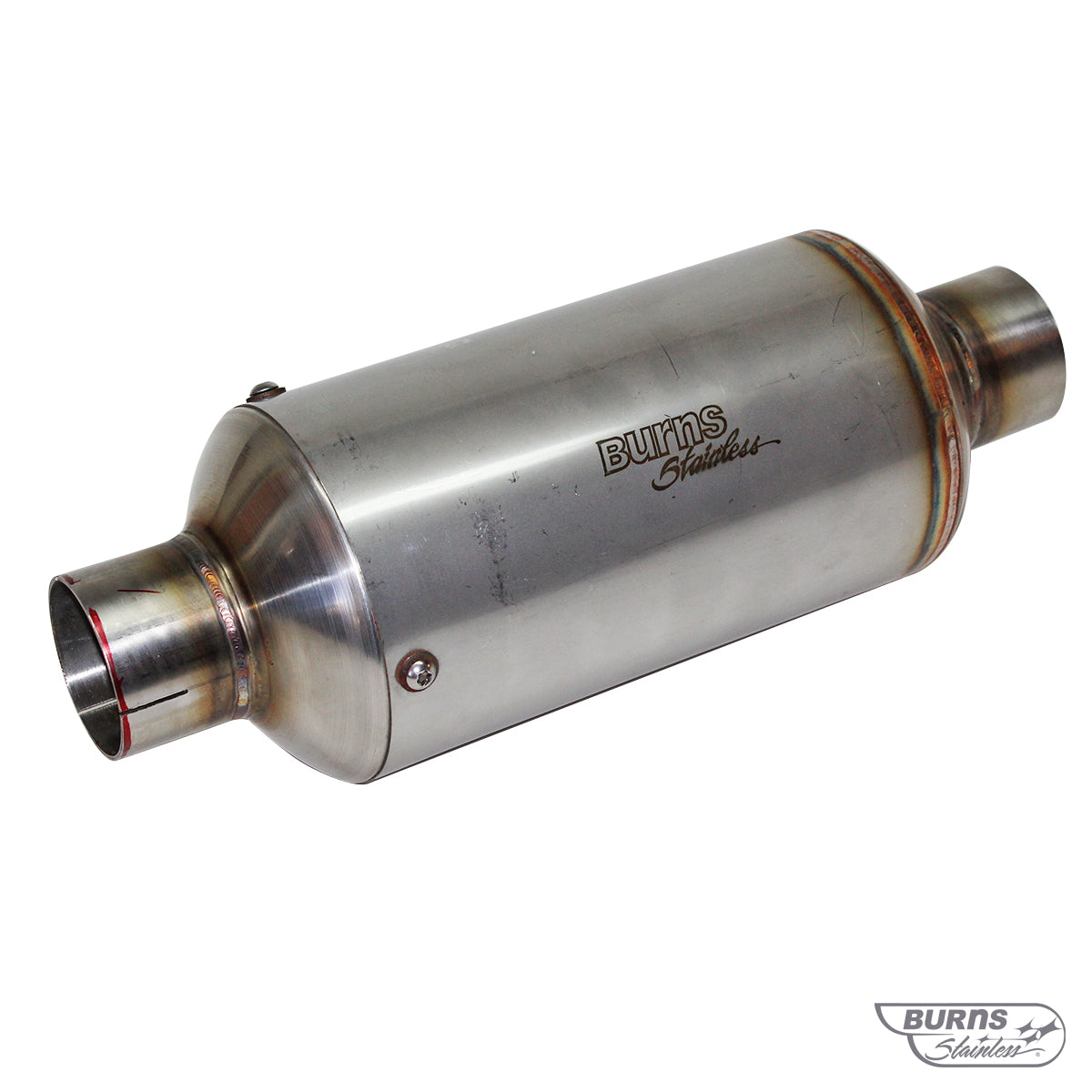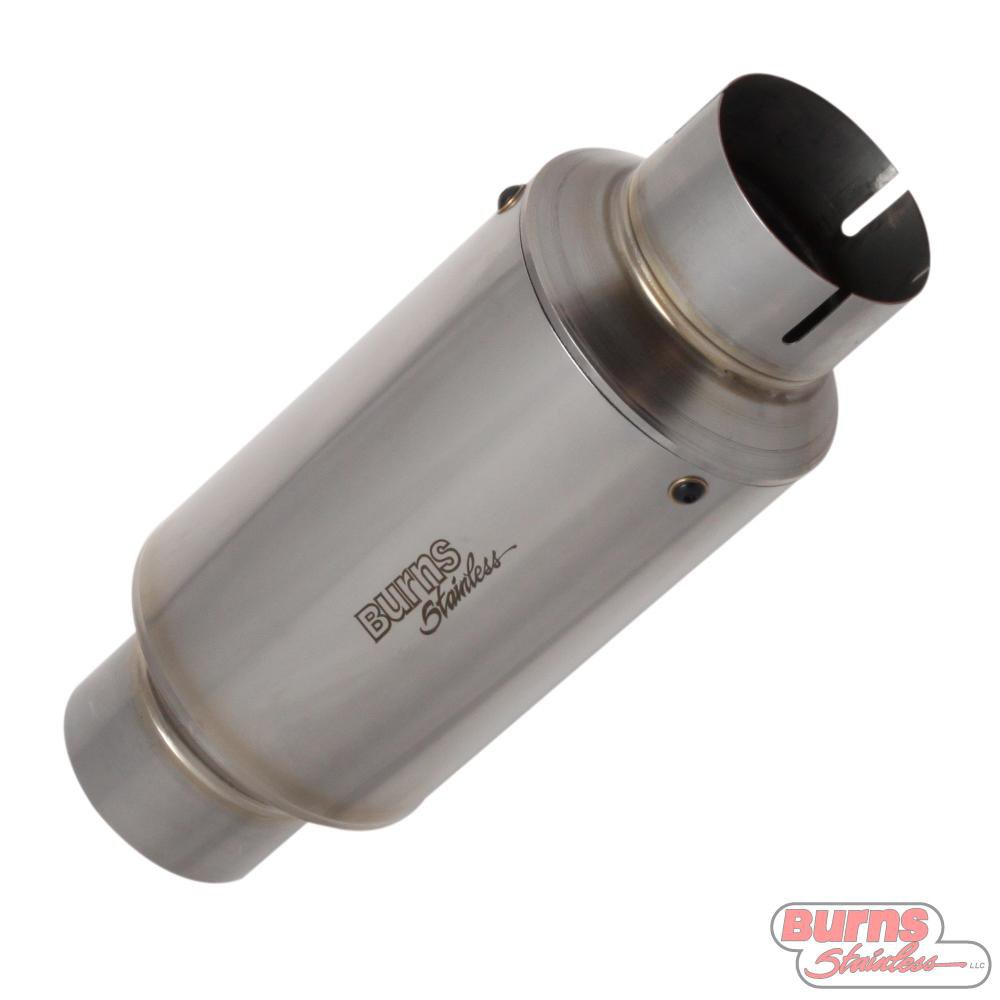PRI Magazine has added a great column entitled, "Stop Doing That, Do This Instead," that is taking a critical look at "the way things are usually done" in racing and finding better ways. In the September issue, Vince Roman, CEO of Burns Stainless, is featured in the column looking at how exhaust headers are sized. During an interview with Drew Hardin, we discussed the fact that when racers think about exhaust headers, they typically think "bigger is better." That is not always the case. A few excerpts follow:
"BIGGER ISN’T NECESSARILY BETTER, AS FACTORS LIKE ENGINE RPM, CAMSHAFT CHOICE, TRANSMISSION, AND MORE SHOULD BE CAREFULLY CONSIDERED IN ORDER TO MAXIMIZE PERFORMANCE..."
"There’s a notion that, in order to get a lot of exhaust gas to flow out of a cylinder, the pipe needs to be large,” explained Vince Roman of Burns Stainless, Costa Mesa, California. “But we find that’s not really the case. It needs to be the correct size....”

“There are a couple things going on,” Roman said when explaining why a big pipe may not always be a better pipe. “One is scavenging. With a very large exhaust pipe on an exhaust port, when the exhaust port opens and the exhaust starts flowing out, recirculating eddies form out of the exhaust port. That is an energy waster...”
Another important factor is “keeping the velocity of the gases sufficiently high so that the gases will have a lot of momentum as they flow out of the port,” he continued. “One way to think about that is when you put a nozzle on a water hose. The nozzle increases the velocity of the water and actually throws the water out further...."
“The nozzle reduces the amount of flow through that hose,” he noted. “An open hose will flow more than one with a nozzle on it, but the nozzle will push it out further. It’s all about finding that happy medium, balancing the exhaust flow rate with exhaust header flow capacity. If you don’t, the exhaust gases will not have a lot of momentum, so at the end of the exhaust stroke and at the beginning of the intake stroke, there will be a lot of exhaust gas still close to the exhaust port. When intake filling starts to happen and pressures lower in the cylinder, the exhaust gases that haven’t traveled very far from the cylinder will be sucked back into the cylinder, giving you a less explosive charge for the next cycle....”

“The scavenging portion of the cycle becomes less important since a power adder, like a positive-displacement blower, provides much more cylinder-filling pressure than a scavenging wave,” he explained. “There aren’t such low pressures in the cylinders during the intake stroke because there is so much pressure filling them...”
Scavenging is still an issue “with nitrous and centrifugal superchargers,” he said. “At part-throttle and low rpm with a centrifugal supercharger, the cylinder-filling pressures aren’t as high as they are at higher rpm. You still want to have good throttle response when it’s not up to full boost. Exhaust scavenging will help here.” The same holds true with a nitrous system, as the racer isn’t always “on the nitrous. A well-designed exhaust system will provide better throttle response in that case....”

"Burns Stainless has a computer program “that sizes headers and collectors based on engine parameters and combinations,” Roman said. “Using our X-Design Parametric Exhaust Modeling Program, we can calculate proper exhaust tube size and get the length of the header and the collector sizing so that it works with that particular engine combination.”
Fill out the race engine spec form HERE
Read the complete article at PRI MAGAZINE

